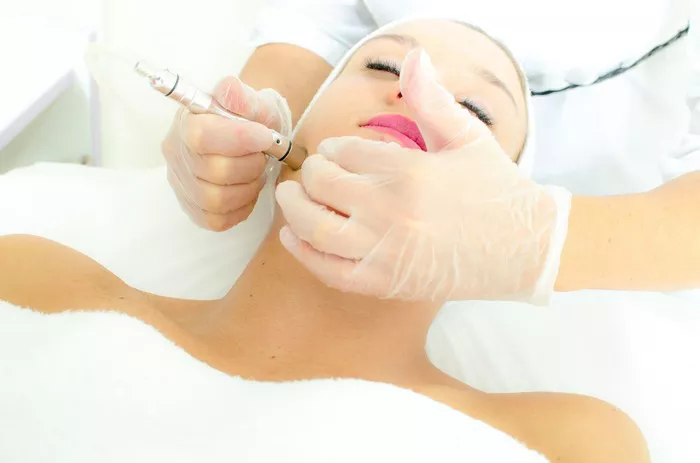The fastest way to get rid of pigmentation is a question that has been on the minds of many people who suffer from this skin condition. Pigmentation is a common skin problem that occurs due to the overproduction of melanin, which is responsible for skin color. Excessive exposure to sunlight, aging, hormonal changes, and genetics are some of the factors that contribute to pigmentation. While pigmentation is not a serious health concern, it can be a cosmetic issue that affects a person’s self-esteem. In this article, we will discuss the fastest way to get rid of pigmentation.
Understanding Pigmentation
Before we dive into the fastest way to get rid of pigmentation, it is essential to understand what pigmentation is and what causes it. Pigmentation is a condition that occurs when the skin produces too much melanin, which is responsible for skin color. Melanin is produced by cells called melanocytes, which are located in the skin’s epidermis. When the skin is exposed to sunlight, the melanocytes produce more melanin to protect the skin from UV rays. This is why people who spend a lot of time in the sun tend to have darker skin.
However, sometimes the melanocytes produce too much melanin, leading to hyperpigmentation or dark spots on the skin. There are several factors that can cause pigmentation, including genetics, hormonal changes, aging, and sun exposure. Pigmentation can occur on any part of the body, but it is most common on the face, hands, and other areas that are frequently exposed to the sun.
The Fastest Way to Get Rid of Pigmentation
Now that we understand what pigmentation is and what causes it, let’s discuss the fastest way to get rid of it. There are several treatments available for pigmentation, including topical creams, chemical peels, laser therapy, and microdermabrasion. However, the fastest way to get rid of pigmentation depends on the severity of the condition and the individual’s skin type.
Topical Creams
Topical creams are the most common treatment for pigmentation. These creams contain ingredients that help to lighten the skin and reduce the appearance of dark spots. Some of the most common ingredients in pigmentation creams include hydroquinone, kojic acid, and retinoids.
Hydroquinone is a skin-lightening agent that works by inhibiting the production of melanin. It is available over-the-counter in concentrations of 2% or less, and higher concentrations require a prescription. Kojic acid is a natural skin-lightening agent that is derived from mushrooms. It works by inhibiting the production of melanin and is often used in combination with other skin-lightening agents. Retinoids are a type of vitamin A that helps to increase cell turnover and reduce the appearance of dark spots.
Topical creams are effective for mild to moderate pigmentation. However, they can take several weeks or months to produce visible results. It is essential to use these creams as directed and avoid sun exposure while using them.
Chemical Peels
Chemical peels are a type of skin treatment that involves applying a chemical solution to the skin to remove the outer layer of dead skin cells. This process helps to reduce the appearance of pigmentation and improve the skin’s texture. Chemical peels are available in different strengths, and the strength of the peel determines how deep it penetrates the skin.
Superficial chemical peels are the mildest type of peel and only penetrate the outer layer of the skin. These peels are effective for mild pigmentation and can be done in a dermatologist’s office or at home. Medium-depth and deep chemical peels penetrate deeper into the skin and are more effective for moderate to severe pigmentation. These peels are usually done in a dermatologist’s office and require downtime for the skin to heal.
Laser Therapy
Laser therapy is a type of skin treatment that uses a laser to target and destroy the melanin-producing cells in the skin. This process helps to reduce the appearance of pigmentation and improve the skin’s texture. Laser therapy is effective for moderate to severe pigmentation and can be done in a dermatologist’s office.
There are several types of lasers used for pigmentation, including IPL (intense pulsed light) and fractional lasers. IPL lasers work by targeting the melanin in the skin and breaking it down. Fractional lasers work by creating tiny wounds in the skin, which stimulate the body’s natural healing process and promote the growth of new, healthy skin cells.
Microdermabrasion
Microdermabrasion is a type of skin treatment that involves using a handheld device to exfoliate the skin and remove the outer layer of dead skin cells. This process helps to reduce the appearance of pigmentation and improve the skin’s texture. Microdermabrasion is effective for mild to moderate pigmentation and can be done in a dermatologist’s office or at home.
Conclusion
Pigmentation is a common skin problem that affects many people. While it is not a serious health concern, it can be a cosmetic issue that affects a person’s self-esteem. There are several treatments available for pigmentation, including topical creams, chemical peels, laser therapy, and microdermabrasion. The fastest way to get rid of pigmentation depends on the severity of the condition and the individual’s skin type. It is important to consult with a dermatologist to determine the best treatment plan for your specific needs.


